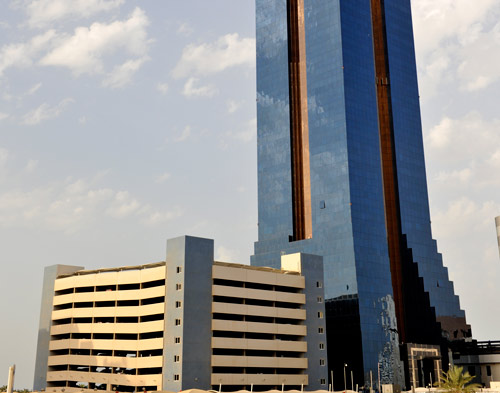Bahrain’s Economy: Freest Economy in the Middle East
Bahrain Top Stories
Bahrain’s Economy: Freest Economy in the Middle East
Businesspersons, investors, and knowledgeable observers want to know: How is Bahrain’s economy faring through all this turmoil? The answer: Surprisingly well.

Bahrain’s Economy: Freest Economy in the Middle East
Businesspersons, investors, and knowledgeable observers want to know: How is Bahrain’s economy faring through all this turmoil? The answer: Surprisingly well.
Bahrain is an island country whose total land area is not much bigger than the District of Columbia.
However, these islands occupy in the most strategically centered location in the Persian Gulf, both for trading and military purposes. Located in the Gulf between Saudi Arabia and Iran, south of Kuwait and Iraq, and north of Qatar, the U.A.E, and Oman, it sits in the middle of most oil-rich spaces on earth.
Militarily, the British used it as its headquarters for the Middle East and the route to Asia. After World War II, the Americans took over the British base and made it their center for the region and base of operations for the Fifth Fleet.
Bahrain has been a major trading center throughout history, even before the Roman Empire. Prior to the early 20th century, it was also famed for its pearls recovered from the shallow seas around it. The first discovery and pumping of oil in the Middle East occurred there in 1931. Pearl recovery declined after 1931, and by the time of independence in 1971, Bahrain was primarily dependent on its oil exports and a refinery built by the British, although it still had a basic trading and banking sector.
The population of Bahrain is far different in population than that of most other nations, in that of its 1,234,571 residents (2010 census), a majority of 666,172 (54%) are non-citizens of the country; while only 538,369 (46%) are actual citizens. Of the total population, 866,888 (54%) are Moslem, while 367,683 (46%) are of other religions (Hindu, Christian, Jewish, etc.).
On New Year’s Day 2011, as Bahrain began the second decade of the 20th century, and the fifth decade of its independence from Britain, there was nothing but good economic news to report. By the 1990s. Manama had replaced Beirut as the banking and financial hub of the Middle East. Between 2000 and 2008, the economy had been growing at the rate of over 6%.
|
loading the player….
|
The global financial crisis of late 2008 had, of course, set it back; growth in 2009 was reduced by more than half, to only 2.9%. But in 2010, the economy righted and bounced back to growth of over 4%, and all signs were that growth in 2011 would climb to 5% per annum. In January of 2011, the Index of Economic Freedom rated Bahrain the freest economy in the Middle East, and the best place to do business in the GCC. The future looked bright and sunny without a cloud on the horizon.
Then, on February 14, 2011,the vast upheaval known as the Arab Spring reached Bahrain, the local version coming to be known by the international media as the Bahrain Uprising.
Businesspersons, investors, and knowledgeable observers want to know: How is Bahrain’s economy faring through all this turmoil? The answer: Surprisingly well.